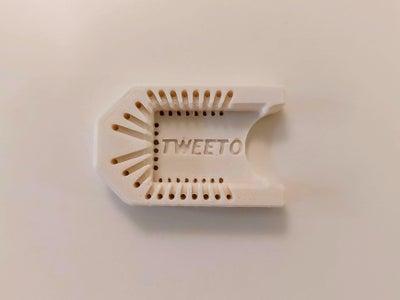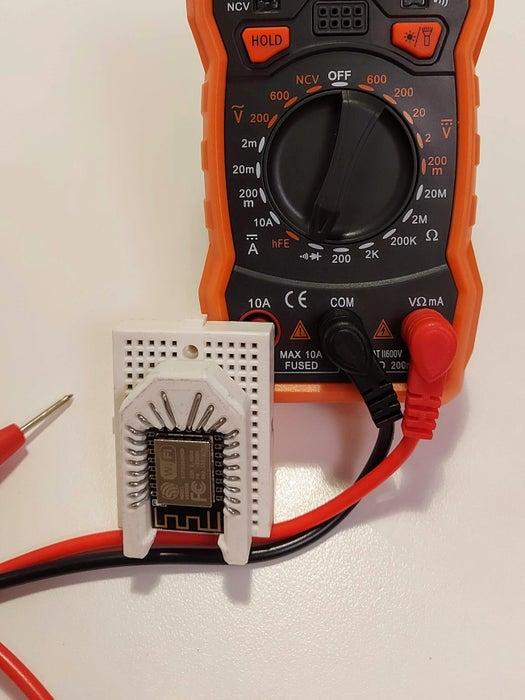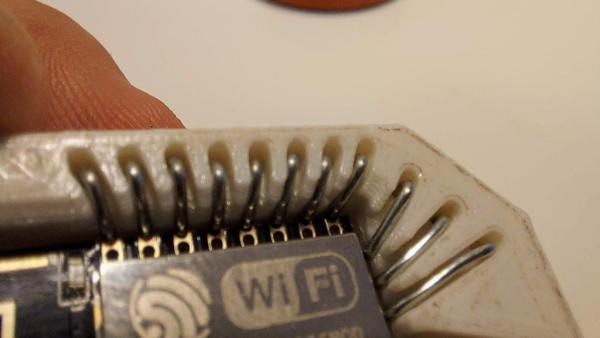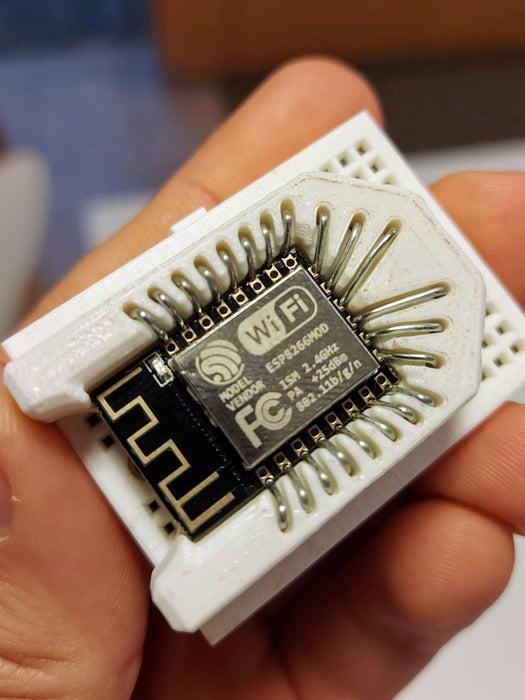I’ve been looking for an ESP8266 (ESP-12) socket for a long time, and the way I see it, It had to have all of these properties:
- 100% Breadboard Friendly
- No soldering required
- Snap Fit and snugly hold the ESP8266
- DIY from everyday household items
- Easy to print
- Easy to build
I found a few solution on Thingiverse.com, But non of them met all my prerequisite, so I designed my own socket.
The socket turned out very good and the design met all my expectations and conditions, in addition it has a cool ‘Spaceship‘ look.
Supplies:
- 3D Printer (I used my Creality Ender 3 V2)
- Pliers
- Cutter
- #2 Paper Clips
Step 1: 3D Print

I designed the Socket using Autodesk Fusion 360 Personal and I highly recommended it – About 4 hours.
I 3D printed the model using my Creality Ender V2 – About an hour.
Slicing for the Ender 3 V2 was done using Cura with the basic settings, nothing special:
- 20% Infill
- 0.2mm Layer Height
- No Raft
- No Support
Step 2: Assemble the Pins

My biggest challenge was to make the pins stay in place between uses, while inserting and removing the ESP8266 and while connecting the socket to breadboards, in addition I didn’t want to use glue or more 3D parts (casing and brackets) to keep the pins in place.
After several designs I came up with the solution – a tiny groove at bottom to fix the pin, together with the upper bridge, this design keep the pin in place by countering the upward\downward motion while using with breadboards and fitting the ESP.
The assembly is quite easy and straight forward once you get it, take a look at the animation and the video above to get a better idea.
For each pin:
- Open a paper clip to a straight wire
- Insert the wire to the inner hole (the short one)
- Leave enough wire for the bottom grove (don’t bend it yet)
- Bend the upper part, use the top groove as guidance
- Use a marker to mark the outer hole (the long one) position on the wire
- Take out the wire and bend accordingly
- Insert the U shaped wire all the way down
- Flip the socket on a table or a flat surface
- Pull the outer pin to make it flash with the top part
- While pulling the inner pin, bend it half way through toward it’s grove
- Cut any excessive material (Be carful, it can shot out – USE eye protection and pay attention to the cutting direction and projectile)
- Bend it all the way and fix it inside the groove
For ease of assembly, start from the left side, the nose of the ‘spaceship’ and work your way to it’s engines.
Finally, trim all the pins to about 10mm.
Step 3: Quality Check and Usage

Plug an ESP8266 to the socket and using a multimeter perform a continuity test for each pin, touch the pin with one end and the gold headers on the ESP with the other end, make sure you don’t accidently touching the pin wire.
When you plug the socket to a breadboard, apply force evenly and make sure you press down on the pins for added stability and to keep them from bending out.
My entire motivation for this project was to be able to program the ESP-12 module using a NodeMCU and doing so without any soldering, you can find more about this method here, now I can easily achieve this using my new socket.
Step 4: What’s Next?

The first thing I’ve noticed is that the paper clip wire is a bit thick (0.8mm), I believe using a 0.6mm copper wire will be easier on your breadboard and make it less tight when plugin in the ESP.
I hope I can test it soon and upload my results.
Source: DIY ESP8266 ESP-12 Socket – Snap Fit, Breadboard Friendly, No Soldering

